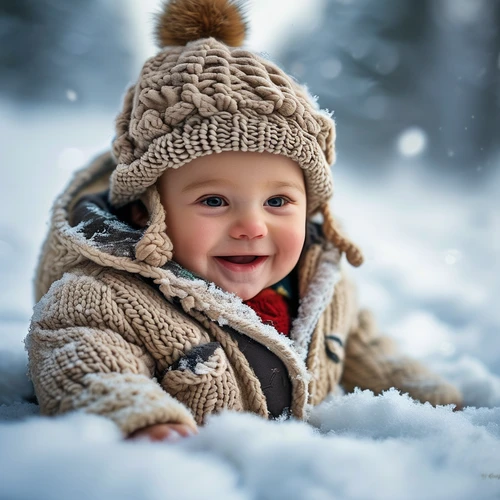Winter can be a magical season, but it presents unique challenges when it comes to keeping your little one warm and comfortable. Outfitting your baby with the right winter gear is crucial not only for their comfort but also for their safety. Here’s a guide to essential winter gear for babies that will help you navigate the coldest months with confidence.
Layers: The Key to Staying Warm
The secret to keeping your baby warm in winter is layering. Start with a breathable base layer, such as cotton or moisture-wicking fabric, followed by an insulating mid-layer like fleece, and end with a windproof and water-resistant outer layer.
Outerwear: Jackets & Snowsuits
A well-insulated jacket or snowsuit is fundamental for outdoor activities. Look for options with adjustable cuffs and hoods to provide extra protection against the elements. Remember that the outer layers should be roomy enough to accommodate multiple inner layers.
Footwear & Accessories: Hats, Gloves & Boots
Hats are crucial as babies lose a significant amount of heat through their heads. Choose soft, warm knit hats that cover the ears. Mittens are preferable to gloves for small hands as they provide better insulation and prevent heat loss between fingers.
Carrier Considerations
If you use a baby carrier or stroller, consider using a footmuff or rain/dust cover that can be attached to keep your baby warm and protected from snow, wind, and rain. Make sure these accessories provide ample room for air circulation to avoid overheating.
Layered Legwear
Avoid heavy winter pants as they can restrict movement. Instead, opt for thermal leggings under breathable overalls or ski pants designed for active babies. Fleece-lined socks are a must to keep tiny toes warm and cozy.
Safety First: Never Overdress
While it's essential to keep your baby warm, avoid overdressing them as they can overheat or have difficulty moving around in excessive clothing. A good rule of thumb is dressing your baby in one more layer than you'd wear yourself.
Monitoring & Adjustments
Check your baby’s temperature frequently during outings to ensure comfort and safety. Touch their chest, back, or stomach (rather than hands or feet) for a better indication of core body temperature.
Indoor Play: Keeping Them Cozy at Home
Ensure your home is sufficiently heated before the winter season sets in. Use baby monitors with temperature sensors to keep an eye on indoor conditions and make adjustments as needed.


